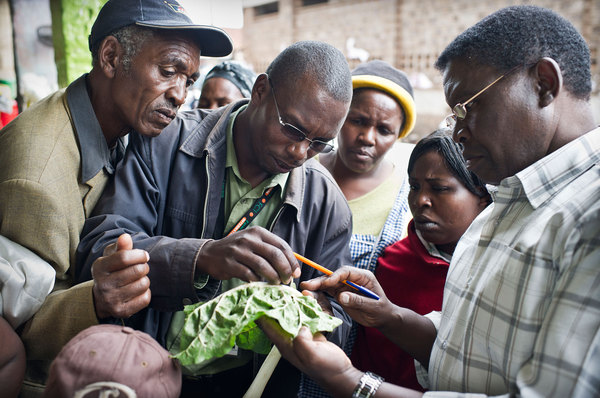Clash of the food security threats
“On a planet with sufficient food for all, a billion people go hungry.” The Commission on Sustainable Agriculture and Climate Change As the global population grows, it is not just one factor that threatens food security but several interconnected threats that will continue to make it difficult to produce enough food for everyone. The combination…
Cassava – another superhero unmasked?
For those of you keeping a watchful eye on the plant health news feed, you may have noticed a recurring theme around the topic of cassava crops in East Africa over the last few days. Cassava, a staple crop across sub-Saharan Africa, has been the subject of a well-established battle against Cassava Mosaic Disease (CMD),…
Ozone pollution negatively affects crop yields
It is predicted that, as levels of the air pollutant, ozone, continue to increase, they will be highest in areas of the world with the most rapidly increasing population levels. This is bad news for crop growers in developing countries, as it has been found that high concentrations of ground-level ozone can have a negative…
Which is the world’s worst agricultural pest?
They have caused famines that killed millions; they have precipitated the release of hundreds of megatonnes of carbon; they even turned the UK into a nation of tea-drinkers. And today they are still destroying around 40 per cent of the crops that we grow worldwide. Agricultural pests and diseases have a lot to answer for.
Boosting Yields with Banana Compost
In Egypt a new ‘banana compost’ has been trialled with positive results. The compost increases crop yields whilst reducing water and fertiliser use. This new cultural method of crop management could soon be commercially produced to help Egyptian farmers Banana plants only fruit once in their lifetime and are normally burned by farmers afterwards to…
Information Diffusion Key to Pest Management
A recent study has found that integrated pest management programs can experience significant lags in their implementation due to slow ‘information diffusion’ within farmer communities. Cooperation between farmers in developing countries was found to be key to ensure the successful coordinated implementation of such programs. Integrated pest management (IPM) programs are biological approaches to dealing…
Coffee Berry Borer thriving due to Climate Change
A newly published paper has found that temperature increases are benefiting coffee berry borers in East Africa. The insects are causing more damage to coffee crops and it has also been reported that their distribution range has also expanded. The researchers behind the study also predict that the damage caused by the borers will worsen…
Sunscreen for temperate crops
British researchers have discovered how corals are able to resist harmful UV light through their relationship with algae. They have found more than 20 sun-protection compounds within corals that could be used to benefit farmers in developing countries. The new compounds could bolster the current sun protection processes found in temperate crops to allow them…
Microwaved Pests: A new recipe for success?
Researchers at the National Physical Laboratory (NPL) are currently exploring the use of microwaves as a potential pest control method. Unlike traditional chemical pesticides, which indiscriminately kill all insects, microwaves would be able to target specific insect pests and not affect other insects in the area. This new application of microwaves could benefit farmers in…

